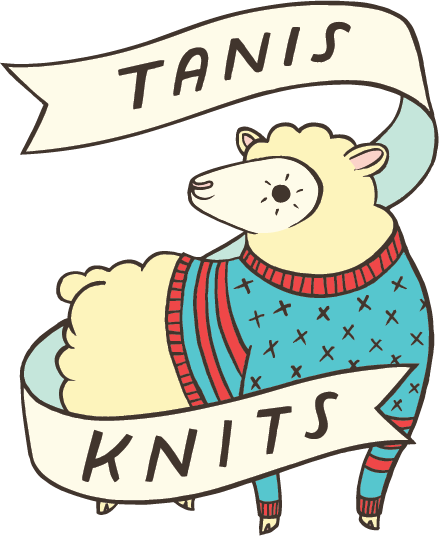Living in Washington DC is a feast for the eyes when you're talking about architecture. We used to live on Capitol Hill and I'd pack up our newborn son, leash up our pug and head out for our daily 3 mile walks. We'd walk through the grounds of the Hill, strolling alongside senators and lobbyists hustling to and from meetings, wind our way through the vegetation of the National Botanical Gardens nestled at the base of the Hill, swing back around and circle the Library of Congress, then head home. I loved these walks and it was these daily jaunts that inspired Capitol Knits, my second book.

Once me moved a mere 9 miles away to the other side of the Potomac River and became residents of Virginia, I was afraid we'd lose the sense of history and grand architecture I had come to admire. I was extremely happy to realize that Old Town Alexandria was not only home to George Washington himself and Mt. Vernon was down the road, but the history of Alexandria was just as rich as that of DC. Alexandria may not have the grand scale and the monuments that our nation's capitol has, but there are ancient restaurants that our founding fathers hung out at, historic homes of people who affected real change in politics, the Underground Railroad, and so many remnants left behind of people who lived here when our nation was just finding its feet. Of course history cannot only be viewed through rose-colored glasses - not everything that happened in Alexandria is cheerful and bright, but we can use these instances to teach future generations how to move forward and do better. History is a wonderful teacher.
There's a tiny little blue house on Queen Street in Old Town I would go by when out walking with my son. Nicknamed "The Spite House," because as the New York Times stated in an article about the home in 2008, "John Hollensbury, the owner of one of the adjacent houses, built it in 1830 to keep horse-drawn wagons and loiterers out of his alley. Indeed, the brick walls of the living room have gouges from wagon-wheel hubs. The house, 7 feet wide, about 25 feet deep and a whopping 325 square feet in two stories, is...just across the Potomac from Washington. Structurally, it’s more of an enclosed alley than a house — the brick walls of older houses on either side form the painted brick walls in the living room." I love this house because it's a "blink and you'll miss it" piece of architecture. People walk and drive by it everyday and are blind to its charm.
When contemplating my last design for the year-long String NY KAL projects, I kept thinking about this house. The beautiful, almost Delft blue of the painted exterior, the brick walkway out front, the white trim and black shutters and the texture that only old buildings seem to have were perfect inspiration for a hat. Using String Yarns' super soft brand new Dolcetto yarn in the perfect shades of blue and cream, a warm and squishy blend of 70% merino wool and 30% cashmere and knitting up on US 8s, this is another project designed to teach the knitter multiple techniques. My model and I were lucky enough to shoot in front of the house wearing the hat inspired by it!
Starting September 13 in the String Yarns Ravelry Group here, we'll begin our 2-month adventure together to knit this unisex hat. Our first month will consist of me checking in daily and posting step-by-step photo tutorials on our techniques which will be broken down into weekly segments. We'll cover my favorite cast on - the German twisted cast on, Latvian braids running in both directions (I LOVE Latvian braids!), mosaic knitting, crown decreasing, switching to DPNs and finishing. After a month, we'll switch gears and I'll continue to check in daily to make sure everyone has a chance to catch up. We'll wrap things up in November.
So what exactly is mosaic knitting? Often called slip-stitch color work, it's a lesser-known cousin to Fair Isle and intarsia knitting. Unlike Fair Isle, mosaic knitting is not stranded and unlike intarsia, we're not working on one small section with bobbins. Each color is worked across 2 rows (or in our case, rounds) while the other is left behind. Certain stitches are slipped rather than knit to create the illusion of using both colors in one row. This creates elongated stitches and geometric designs and is much faster than both Fair Isle or intarsia. We'll take it a step further and work it in garter in the round. This is the perfect technique to mimic the brickwork seen in front of Hollensbury's house and will get you very comfortable with chart reading!
As always with our KALs, String is generously offering 15% off the Hollensbury Hat kit. Use the code SeptKAL16 at checkout to receive your discount and chose my color combination or create one of your own. Order your kit now so we can all start together on September 13!
I'm excited that this hat has so many interesting and often unsung techniques packed into it. As summer draws to a close and the leaves begin to fall, our knitting takes center stage in our lives again. The chill in the air gets me excited to think about what will fly across my needles this season and I continue to work my way down my holiday knitting list. I hope you'll join me in this last KAL for String Yarns and learn to love mosaic knitting, Latvian braids, German twisted cast on and hat shaping as much as I do.
Bring on autumn! Download the Hollensbury Hat here.




